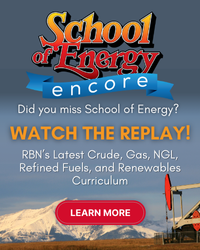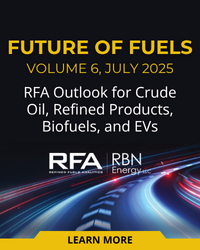The story of crude-by-rail (CBR) in North America is that of a victory of good old U.S. ingenuity over the lack of pipeline capacity that stranded booming shale oil production in 2012. The lower cost to market of “on-ramp” rail terminals allowed surging crude production a route to (mainly) coastal refineries - igniting a building boom over 4 short years that has left 82 load terminals and 44 destination terminals operating today - many of them now underutilized. Along the way monthly lease rates for rail tank cars that reached $2,750/month at the height of the boom are down to $325/month after the bust – with many lease holders paying daily rent to park their empty cars. Today we conclude our series reviewing the state of CBR today.
Recap
This is Part 10 – the grand finale in our series updating the sorry state of the CBR business in North America in 2016 compared to its heyday a few years back. In Part 1 of the series we noted CBR declines in response to narrower spreads between U.S. domestic crude benchmark WTI and international equivalent Brent. The lower spreads reduce the incentive to move crude from inland basins to coastal refineries by rail because the latter is a more expensive transport option compared to pipelines. CBR became a big deal when WTI was discounted to Brent by upwards of $25/Bbl in 2011 and 2012 because of congestion caused by a lack of pipeline capacity. Back then it made sense to use rail to get stranded crude to market. As a result U.S. CBR shipments grew from 33 Mb/d in January 2010 to a peak of 928 Mb/d in October 2014 (according to Energy Information Administration - EIA). As new pipelines have been built out to provide less expensive options to get stranded crude to market so the WTI discount has narrowed and CBR traffic has declined. Primarily in response to the narrowing spread – overall CBR volumes fell during 2015 but not as fast as you might expect – dropping only 35% between January 2015 and January 2016 (latest EIA data) even though spot market economics for rail shipments often made no sense. As we discussed in Part 2 – looking at the epicenter of the CBR boom in North Dakota – the slower than expected decline in rail shipments is mostly because committed shippers and refiners continue to use rail infrastructure that they invested in (and made take-or-pay commitments to) and because some routes do not have pipeline access (East Coast and West Coast). In Part 3 we looked at CBR traffic out of the Niobrara shale region in the Rockies. Midstream companies continue the build out and expansion of rail terminals as well as new pipelines in this region even though production has leveled off. In Part 4 we looked at the fate of CBR load terminals in Western Canada that are “overbuilt and underutilized”. In Part 5 we turned to CBR market destinations – beginning with the East Coast. In Part 6 we began a two-part look at CBR unloading on the West Coast with the Northwest refineries. Those refineries continue to receive fairly significant shipments of CBR from North Dakota in the face of narrowing spreads between West Coast benchmark Alaskan North Slope (ANS) and WTI – in part because Washington refiners are committed to term throughput contracts and railcar leases. In Part 7 we looked at California CBR where environmental resistance to building out delivery terminals delayed refiner’s plans such that shipments never really took off. In Part 8 we described falling CBR shipments to the Gulf Coast region. In Part 9 we detailed the 1.7 MMb/d of CBR unload capacity built out in the Gulf Coast region – a massive 12 times the 142 Mb/d shipments into the region reported by EIA in January 2016. This time we conclude the series and look ahead to the future of CBR.
Join Backstage Pass to Read Full Article







